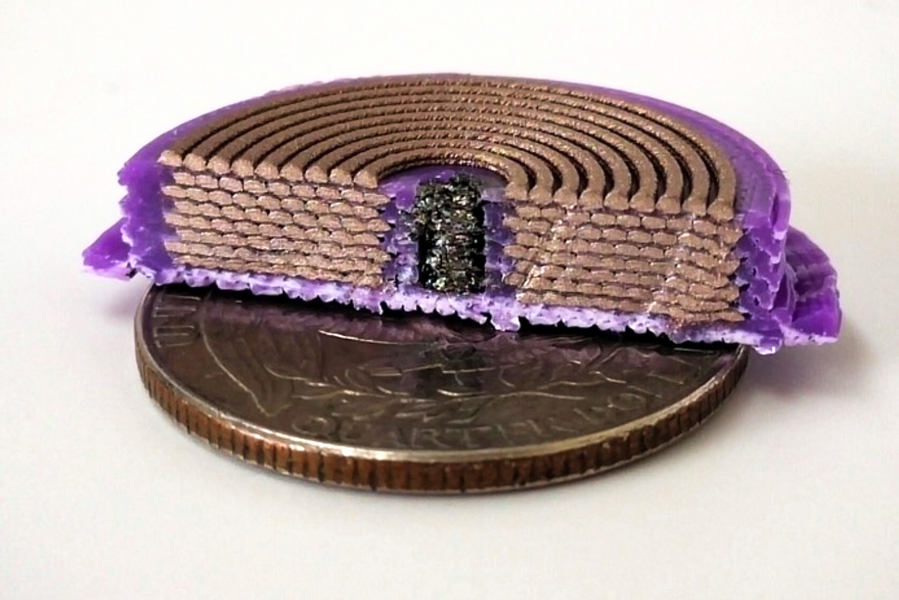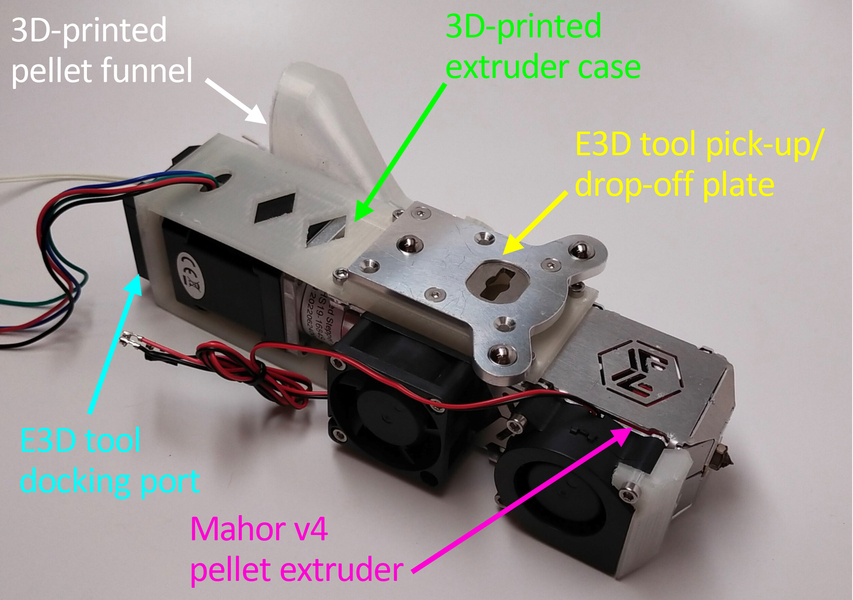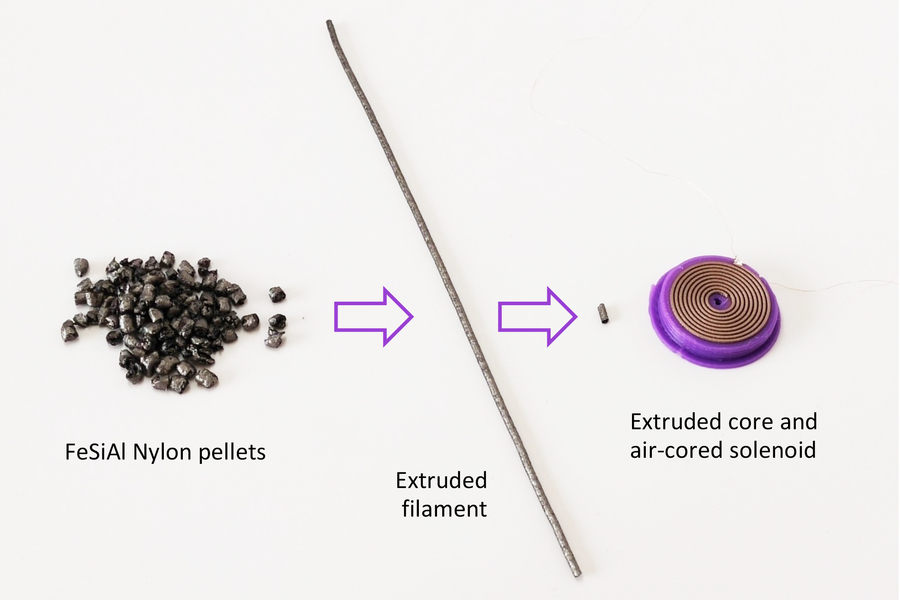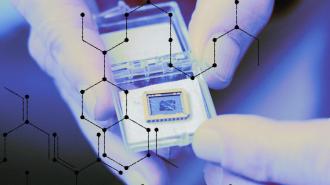The printed solenoids could enable electronics that cost less and are easier to manufacture — on Earth or in space.

MIT researchers modified a multi-material 3D printer so it could produce three-dimensional solenoids in one step by layering ultrathin coils of three different materials. It prints a U.S. quarter-sized solenoid as a spiral by layering material around the soft magnetic core, with thicker conductive layers separated by thin insulating layers.

The researchers modified a multimaterial 3D printer so it could print compact, magnetic-cored solenoids in one step. This eliminates defects that might be introduced during post-assembly processes.

Solenoids are produced by precisely layering three different materials — a dielectric material that serves as an insulator, a conductive material that forms the electric coil, and a soft magnetic material that makes up the core. The soft magnetic material the researchers used, which is in the form of pellets, achieves higher performance than filament-based materials.
Imagine being able to build an entire dialysis machine using nothing more than a 3D printer.
This could not only reduce costs and eliminate manufacturing waste, but since this machine could be produced outside a factory, people with limited resources or those who live in remote areas may be able to access this medical device more easily.
While multiple hurdles must be overcome to develop electronic devices that are entirely 3D printed, a team at MIT has taken an important step in this direction by demonstrating fully 3D-printed, three-dimensional solenoids.
Solenoids, electromagnets formed by a coil of wire wrapped around a magnetic core, are a fundamental building block of many electronics, from dialysis machines and respirators to washing machines and dishwashers.
The researchers modified a multimaterial 3D printer so it could print compact, magnetic-cored solenoids in one step. This eliminates defects that might be introduced during post-assembly processes.
This customized printer, which could utilize higher-performing materials than typical commercial printers, enabled the researchers to produce solenoids that could withstand twice as much electric current and generate a magnetic field that was three times larger than other 3D-printed devices.
In addition to making electronics cheaper on Earth, this printing hardware could be particularly useful in space exploration. For example, instead of shipping replacement electronic parts to a base on Mars, which could take years and cost millions of dollars, one could send a signal containing files for the 3D printer, says Luis Fernando Velásquez-García, a principal research scientist in MIT’s Microsystems Technology Laboratories (MTL).
“There is no reason to make capable hardware in only a few centers of manufacturing when the need is global. Instead of trying to ship hardware all over the world, can we empower people in distant places to make it themselves? Additive manufacturing can play a tremendous role in terms of democratizing these technologies,” adds Velásquez-García, the senior author of a new paper on the 3D printed solenoids that appears in the journal Virtual and Physical Prototyping.
He is joined on the paper by lead author Jorge Cañada, an electrical engineering and computer science graduate student; and Hyeonseok Kim, a mechanical engineering graduate student.
Additive advantages
A solenoid generates a magnetic field when an electrical current is passed through it. When someone rings a doorbell, for instance, electric current flows through a solenoid, which generates a magnetic field that moves an iron rod so it strikes a chime.
Integrating solenoids onto electrical circuits manufactured in a clean room poses significant challenges, as they have very different form factors and are made using incompatible processes that require post assembly. Consequently, researchers have investigated making solenoids utilizing many of the same processes that make semiconductor chips. But these techniques limit the size and shape of solenoids, which hampers performance.
With additive manufacturing, one can produce devices that are practically any size and shape. However, this presents its own challenges, since making a solenoid involves coiling thin layers made from multiple materials that may not all be compatible with one machine.
To overcome these challenges, the researchers needed to modify a commercial extrusion 3D printer.
Extrusion printing fabricates objects one layer at a time by squirting material through a nozzle. Typically, a printer uses one type of material feedstock, often spools of filament.
“Some people in the field look down on them because they are simple and don’t have a lot of bells and whistles, but extrusion is one of very few methods that allows you to do multimaterial, monolithic printing,” says Velásquez-García.
This is key, since the solenoids are produced by precisely layering three different materials — a dielectric material that serves as an insulator, a conductive material that forms the electric coil, and a soft magnetic material that makes up the core.
The team selected a printer with four nozzles — one dedicated to each material to prevent cross-contamination. They needed four extruders because they tried two soft magnetic materials, one based on a biodegradable thermoplastic and the other based on nylon.
Printing with pellets
They retrofitted the printer so one nozzle could extrude pellets, rather than filament. The soft magnetic nylon, which is made from a pliable polymer studded with metallic microparticles, is virtually impossible to produce as a filament. Yet this nylon material offers far better performance than filament-based alternatives.
Using the conductive material also posed challenges, since it would start melting and jam the nozzle. The researchers found that adding ventilation to cool the material prevented this. They also built a new spool holder for the conductive filament that was closer to the nozzle, reducing friction that could damage the thin strands.
Even with the team’s modifications, the customized hardware cost about $4,000, so this technique could be employed by others at a lower cost than other approaches, adds Velásquez-García.
The modified hardware prints a U.S. quarter-sized solenoid as a spiral by layering material around the soft magnetic core, with thicker conductive layers separated by thin insulating layers.
Precisely controlling the process is of paramount importance because each material prints at a different temperature. Depositing one on top of another at the wrong time might cause the materials to smear.
Because their machine could print with a more effective soft magnetic material, the solenoids achieved higher performance than other 3D-printed devices.
The printing method enabled them to build a three-dimensional device comprising eight layers, with coils of conductive and insulating material stacked around the core like a spiral staircase. Multiple layers increase the number of coils in the solenoid, which improves the amplification of the magnetic field.
Due to the added precision of the modified printer, they could make solenoids that were about 33 percent smaller than other 3D-printed versions. More coils in a smaller area also boosts amplification.
In the end, their solenoids could produce a magnetic field that was about three times larger than what other 3D-printed devices can achieve.
“We were not the first people to be able to make inductors that are 3D-printed, but we were the first ones to make them three-dimensional, and that greatly amplifies the kinds of values you can generate. And that translates into being able to satisfy a wider range of applications,” he says.
For instance, while these solenoids can’t generate as much magnetic field as those made with traditional fabrication techniques, they could be used as power convertors in small sensors or actuators in soft robots.
Moving forward, the researchers are looking to continue enhancing their performance.
For one, they could try using alternate materials that might have better properties. They are also exploring additional modifications that could more precisely control the temperature at which each material is deposited, reducing defects.



